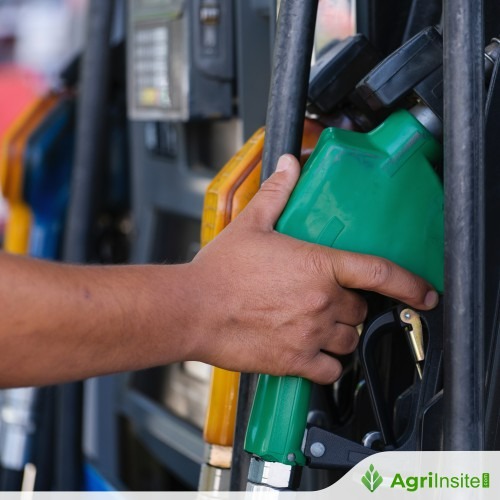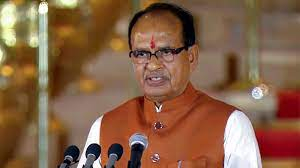Ethanol blending target of 15% till October 2024, an uphill task

The Indian government’s ambitious target of achieving 15% ethanol blending with petrol for the 2023-24 supply year is challenging, with the blending rate standing at 13.8% by September 2024. Analysts predict that reaching 15% will be difficult but possible, with a potential blending rate of 14%. While ethanol production has risen, especially from grains, sugarcane output is limited. India’s goal of 20% blending by 2026 faces hurdles, but progress has saved foreign exchange, reduced emissions, and boosted rural economies.
The Centre’s target of achieving 15 per cent blending of ethanol with petrol in the ethanol supply year (ESY) 2023-24 has entailed analysts and industry sources calling the move ambitious considering that the cumulative rate till September 2024 stood at 13.8 per cent.
Even as the Centre has maintained the blending rate roughly at 15.5 per cent and above on a monthly basis since May 2024 in the current ESY — November 2023 to October 2024 — analysts and industry sources anticipate that achieving 15 per cent could prove to be an uphill task.
“Getting there (15 per cent) seems like a tough ask, but we will come close to the target. The government is committed to encouraging biofuels,” said a senior government official.
Crisil Ratings’ Director Poonam Upadhyay in an August 2024 report said, “Ethanol blending could still improve to 14 per cent in ESY 2024 as extraction from grains has significantly risen due to 40 per cent capacity expansion. That will compensate for the reduced output from sugarcane.”
India Ratings and Research (Ind-Ra) in a report in August echoed similar beliefs and stated that India is likely to achieve a blending rate of around 14 per cent in ESY 2023-24, despite restrictions on the use of sugarcane-based ethanol.
In ESY 2023-24, the total ethanol supply on a provisional basis was 647.66 crore litres, which included 231.58 crore litres from sugar mills. The supply from mills comprises 81.81 crore litres from B-heavy molasses (BHM), 27.58 crore litres from C-heavy molasses (CHM) and 55.98 crore litres from sugar syrup.
Around 24 lakh tonnes of sugar was diverted for ethanol production in the current year.
Target of 20%
The roadmap for ethanol blending in India 2020-25, prepared by an inter-Ministerial Committee, estimated ethanol requirement of 1,016 crore litres to achieve 20 per cent blending target in ESY 2025-26 against production capacity of 1,528 crore litres. A successful E20 program can save the country about $4 billion annually.
Analysts, however, view the 20 per cent target as equally ambitious.
“While the target of 20 per cent ethanol blending in petrol by 2026 still appears ambitious, given the feedstock availability and vehicle compatibility-related challenges, the ethanol segment could witness a double-digit growth even with a blending rate of 16-17 per cent,” Ind-Ra said.
Research bodies point out that biofuels can be an intermediate option for decarbonisation.
For instance, The Energy & Resources Institute (TERI) in a May 2024 report, ‘India’s Journey to Net Zero by 2070: A Conceptual Framework for Analysis’, opined that blending of biofuels for use by vehicles promotes energy efficiency as an intermediate option to lower carbon intensity.
“Vehicles which run only on biofuels are carbon free as biofuel is a renewable source of energy. But if forests are cut for sugarcane plantations to extract ethanol as a biofuel, then the negative impacts outweigh the benefits. Similarly, if price signals for biofuel lead to diversion of food crops from human beings for biofuels, this is an outcome which must be avoided. India does not have the land and water endowments for biofuel to be a significant option for decarbonisation of transport,” it added.
Manifold increase
Under the ethanol blending programme (EBP), the blending of ethanol with petrol increased from 38 crore litres in ESY 2013-14 to over 500 crore litres in ESY 2022-23 with increase in blending percentage from 1.53 per cent to 12.06 per cent.
“Over the past decade, this initiative has delivered significant benefits, including saving ₹99,014 crore in foreign exchange, reducing CO2 emissions by 519 lakh tonne and substituting 173 lakh tonne crude oil. Furthermore, the programme has had a considerable economic impact, with OMCs disbursing ₹1,45,930 crore to distillers and ₹87,558 crore to farmers,” Oil Minister H S Puri noted last month.
This was made possible by the government’s support to the ethanol industry, Puri said adding, that these include additional ₹9.72 per litre for ethanol derived from maize, ₹8.46 per litre for ethanol from damaged rice and ₹6.87 per litre for ethanol from C-heavy molasses (CHM).
These incentives have significantly boosted maize’s contribution to ethanol production, which has risen to 36 per cent in the ESY 2023-24 from a 0 per cent ESY 2021-22, he added.
Additionally, the Minister said that government has resumed supply of FCI rice to ethanol distilleries, allowing for the purchase of up to 23 lakh tonnes through e-auctions from August to October 2024. Starting from November 2024, the supply of sugarcane juice and syrup to distilleries will also commence, marking the start of the ESY 2024-25.














